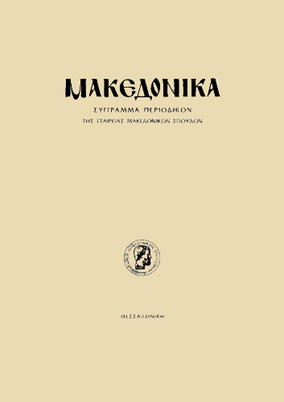Παρατηρήσεις στο θαλάσσιο τείχος της Θεσσαλονίκης
Part of : Μακεδονικά ; Vol.32, 2000, pages 113-123
Issue:
Pages:
113-123
Parallel Title:
Observations on the Sea Wall of Thessaloniki
Section Title:
Articles
Abstract:
The question of what course the Roman sea wall of Thessaloniki originally followed has yet to be fully investigated. The original theory that it followed the course of present-day Mitropoleos St. seems rather unlikely, although it could be claimed, on the basis of a different configuration of the land at the time the Roman walls were constructed, as well as the earlier finds from excavations in the area, that the Roman sea wall followed the course of present-day Tsimiski St., which ran as far as what is now Emboriou Square. The location of the pre-Constantinian Roman harbour on the east side of the city is also doubtful. It seems more likely that this was situated on the west side of the city, where Constantine the Great constructed his own closed harbour, radically altering the appearance of the district and extending the land into the area in front of the sea walls. This section of land - which, according to the Miracles of Saint Demetrios, was unfortified and unwalled - was invaded by the Slavs during their great and crucial siege of the city, when they attempted to capture it along with the Ecclesiastical Wharf, which very probably lay nearby. Once the sieges and earthquakes of the seventh century had ceased, the Thessalonians incorporated this area into the city by building the Byzantine sea walls.
Subject:
Subject (LC):
Notes:
856:https://ejournals.epublishing.ekt.gr/index.php/makedonika/article/view/5728, DOI: https://doi.org/10.12681/makedonika.167
Electronic Resources:




